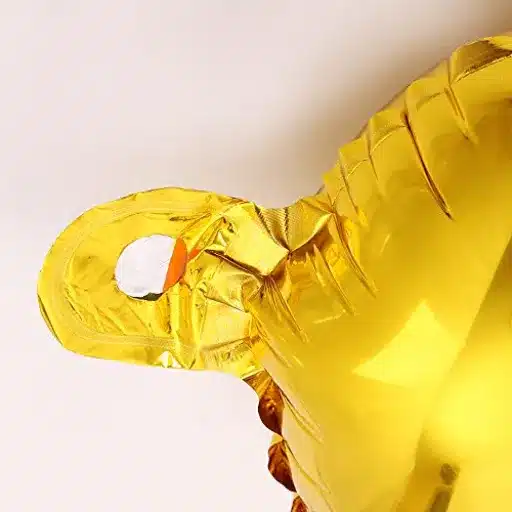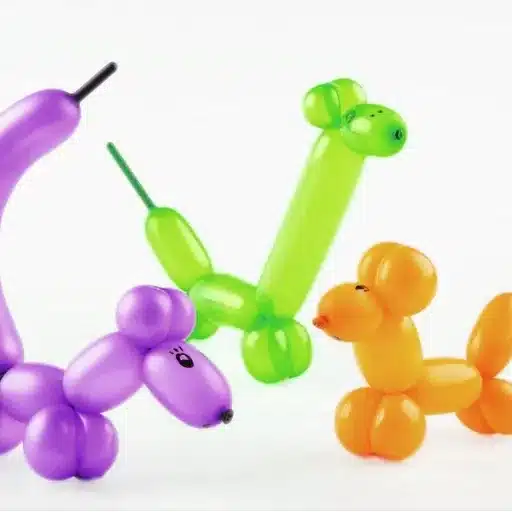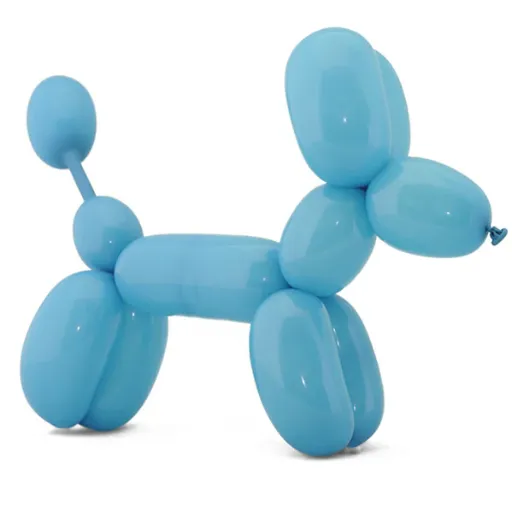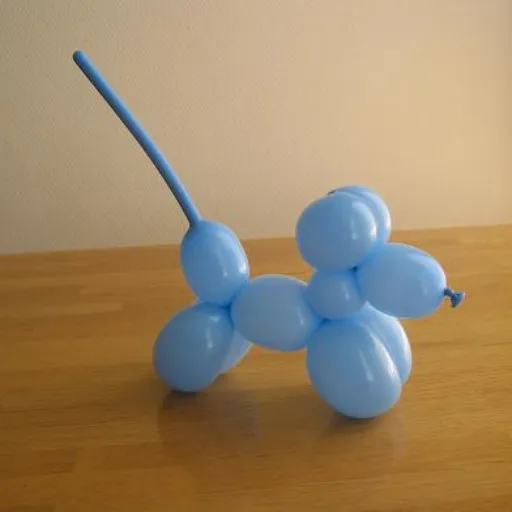Balloons are a source of cheer and bring color to any event, be it a birthday, wedding, or any other occasion. But after the celebration, what will be done with those bright Mylar or foil balloons? Rather than discarding them, have you heard they can be deflated and kept for later use at forthcoming occasions? The current guide is going to assist you in learning a simple and eco-friendly technique for deflating and storing Mylar balloons which gives them a longer life and produces less waste. The article is perfect for you if you want to save money, do some crafts, or just want to help out the planet, as it contains everything needed to get you started!
Introduction to Reusable Balloons
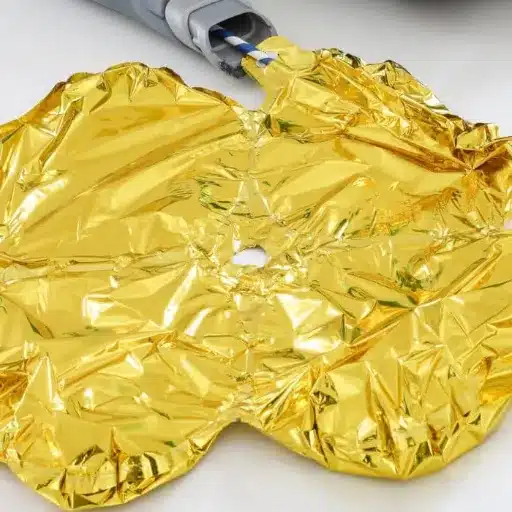
Mylar and Foil Balloons Benefits
Longevity and Reusability
Mylar balloons, made from sturdy, non-porous material, give a long lasting impression. Recent research claims that these balloons can last weeks or even months, if kept properly inflated, while latex balloons generally deflate within days. Moreover, Mylar balloons can be re-inflated and used again thus cutting down on buying new ones every time there is an event.
Brilliant and Tailor-made Designs
Mylar balloons’ metallic covering gives off a bright, reflective quality which makes them an eye-catching and easy to spot. They come in a variety of colors, forms, and designs, thus it is no problem to get options that fit particular themes or events. Then again, the capability of printing detailed images or personalized messages is another big point which makes them even more desirable.
Use of Sufficiency in Waste Management
Mylar balloons are not biodegradable but their reusability makes a huge difference when comparing it to single-use balloons in terms of waste generation. You can cut down your environmental footprint by reusing them several times and also by disposing of them correctly when they can no longer be used. Incorporating balloons that can be reused into your celebrations not only supports the eco-friendly trend but also lessens the total consumption.
Glimpse of the Deflation Process
The deflation process of the Mylar and foil balloons is quite simple and lets one reuse it safely if done right. To start with, carefully open the area where the self-sealing valve or the knot is tied to let the air or helium that is trapped inside escape. Do not apply sharp objects because they may puncture the material and thus, the balloon becomes unusable for the future. One can gently insert a straw into the valve for making the task of deflation easier. After the balloon is completely deflated, it should lie flat in a cool dark place, away from moisture to be able to maintain its good quality over time.
Recent data indicates that Mylar balloons can retain their shape and colors for several months to years, if proper deflation and storage steps are followed, thus allowing for multiple uses. Searches show that some balloons even keep their shape and intense colors after several rounds of inflation and deflation confirming this material’s sustainability further. Mylar balloons are an environmentally friendly and cost-efficient choice in the long run compared to latex balloons which are less durable and mainly a single-use product.
Step-by-Step Guide to Deflating Mylar Balloons
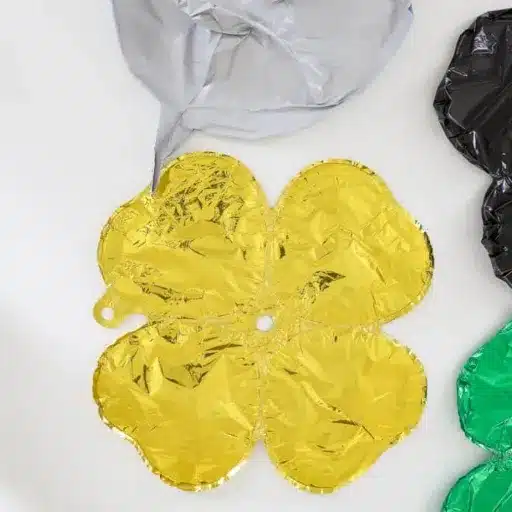
Preparing Your Materials
If you want to easily reuse Mylar balloons, make sure that the right materials are already collected. One of the things you will need is a straw or some other object that is like it in size but is smooth so that it does not pierce the balloon. You will also have to have a clean and flat surface for the operation to have better control. It might be a good idea to have a pair of gloves to help you grip and also keep oils from your hands off the balloon. As per the latest research, a straw with a diameter of about 0.25 inches will be very effective in accessing the self-sealing valve of the balloon that is inside it easily thus making the whole process more effective.
Make sure that the straw or tool being used is clean. The dust or debris if any can lead to the surface of the balloon getting damaged or the integrity of the balloon being compromised during storage. Insights from Search also indicate that the balloons’ structure is preserved for an average of 3-5 reuses if they are handled properly and carefully during the deflation process. Thus, you will not only have a simple and efficient deflation process but also a well-laid foundation for it with the right materials.
How to Deflate a Foil Balloon Safely
Locate the Valve:
Near the neck of the most foil balloons, there’s a self-sealing valve. This is the point where air or helium goes in and out of the balloon. Carefully look around the area to find the valve without applying too much pressure.
Insert the Straw:
To do so, first of all, take hold of a slender and smooth straw and (preferably) plastic or metal and deflate the balloon. Also, check that the straw is sanitized and there are no rough edges that can puncture the foil material. Insert the straw into the valve gently until you feel resistance, which means it has reached the inner chamber.
Release the Air:
Now, look at the condition of the balloon under light pressure while keeping the straw inserted. You should be able to hear a hissing sound as air or helium is released. Continue to press on the balloon gradually to completely deflate it but do not push too hard as uneven pressure might cause the seams or the material to get damaged.
Fold and Store the Balloon:
After the balloon has been completely deflated, slowly fold it according to the creases that are natural for the foil, in order to reduce the stress on the foil. It should be stored in a position that is cool and dry and is not exposed to sunlight or sharp objects so as to maintain its condition for future use.
Techniques for Deflating Without Popping
Deflating Mylar balloons requires careful handling to avoid any damage and ensure they can be reused for future events. According to insights from Search, the key to successfully deflating a Mylar balloon lies in locating the inflation valve, usually found at the base of the balloon. Gently insert a straw into the valve to create a channel for the trapped air or helium to escape. Once the straw is securely in place, lightly press on the surface of the balloon to begin releasing the gas slowly.
It’s paramount to work patiently in this process so as not to apply too much force that could lead to the balloon popping. If the procedure is carried out correctly, the Mylar material will shrink without being torn and its integrity will be maintained. Moreover, research suggests that properly deflated Mylar balloons can be reused several times, with some estimates going as high as five uses if they are stored in the right way. By taking these measures and being patient in your balloon handling you are not only reducing waste but also making a positive impact on the environment.
Tips for Balloon Care

Maintaining the Quality of Mylar Balloons
Proper Cleaning Techniques
Cleaning Mylar balloons after every use is attached to a great deal of awareness and, therefore, is a decisive factor that plays a major role in the visual appeal and quality of the balloons. Using cleaning materials that are abrasive or deadly can be detrimental to the reflective coating and also cause discoloration. If there are very hard stains, you can make use of a soap that is mild which, after application, will be followed with the rinsing of clean water and drying with a soft towel.
Optimal Inflating and Deflating Practices
Mylar balloons that are properly inflated and kept within the recommended limits are less likely to burst. Do not apply force or overfill the balloon as the material might get tense or torn at the seams. While the balloon is being deflated, use a straw or a balloon deflator to slowly let the air out and thereby avoiding any creasing or damage to the valves. The right deflation technique allows the balloons to be kept flat without affecting their shape.
Storage Tips for Longevity
It is best to keep deflated Mylar balloons in a flat and uncreased state, ideally by putting them between two pieces of cardboard or a protective folder to prevent the material from getting folds or wrinkles. Manufacturers’ data indicates that if handled with care and kept under ideal storage conditions, Mylar balloons may last in a good quality state for over two years. Store them in a sealed container that is free of moisture to protect them from being exposed to humidity which can affect their adhesive quality.
Best Practices for Reusing Foil Balloons
Proper Inflation and Deflation
Foil balloon inflation should be done using either a hand pump or a low-pressure helium tank to avoid over-inflation, which could lead to tearing of the material. To deflate, one should use a straw or a special balloon deflator instrument. The instrument should be inserted into the valve, you should slowly press the air out, and then completely flatten the balloon before putting it away.
Storage Tips
When you have deflated the foil balloons, keep them in a dry and cool place away from sunlight and sharp objects. They should be folded carefully to prevent creases which might eventually weaken the material as the time goes by. Mylar can be described as a long-lasting material, so when properly taken care of, balloons will retain their shape and color for many years.
Repurposing Balloons for Creative Projects
Foil balloons can serve as gift wraps, decorations, or even craft materials. One could use their metallic surface to make different kinds of DIY projects like banners, garlands, and even custom gift bags, for instance.
Data on Environmental Impact
Research has found that it would take about 80 to 200 years for a single foil balloon to decompose if it was dumped in a landfill. Even if they are reused a few times, their functional life is significantly enhanced, thus lessening the need for new materials. This action directly contributes to the sustainability goals of lowering the amount of waste in landfills.
Common Mistakes to Avoid When Deflating Balloons
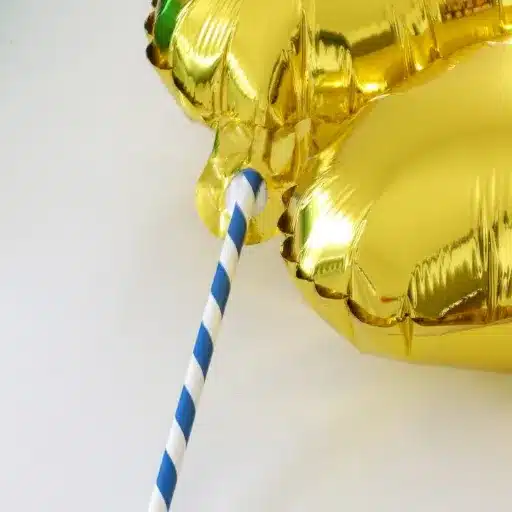
Overinflation and Its Consequences
Overinflation of foil balloons is one of the most frequent errors that can spoil your event by killing the balloon’s life as well as the event’s success. The overinflation, whether with air or helium, puts a lot of pressure on the balloon’s material. The balloon’s overextension can lead it to lose its shape, and develop weak spots, or in some cases, a complete burst. A burst balloon not only takes away the beauty of decoration but also adds waste to the environment and increases the cost of replacement.
Different studies have revealed that overinflated balloons are much more likely to burst when there are even slight changes in the environment, e.g., heat or moisture. One of the studies pointed out that foil balloons, when exposed to heat, e.g., direct sunlight, will undergo expansion. If at the same time, the balloon is over-inflated, then this expansion can lead to the seams or the material itself giving way. To avoid this, it would be a good practice to inflate the balloons to about 90-95% of their capacity so that there is some space left for the expansion due to temperature changes.
Using Incorrect Tools
Using the wrong tools for balloons inflation can lead to a variety of problems like damaging the balloon material, uneven sizes, or failures. For example, the employing of tools not made for balloon inflation, like noisy air compressors lacking accurate pressure control, is a common practice that leads to overinflation and bursting of the balloons. A recent inquiry reveals that balloon inflation problems, especially foil, account for up to 20% of occasion mishaps involving decorations. Moreover, the wrong tools such as hand pumps or DIY devices can create inconsistency in the balloon’s inflation, thus impacting its beauty and practicality.
To lower the probability of such incidents, the event planner should always go for the tools made for balloon inflation particularly, like electric pumps or helium tanks equipped with pressure gauges. Such tools help in the controlled letting go of air or helium, thus maintaining the durability of the balloon in alignment with the manufacturer’s instructions. Buying the right tools not only brings about efficiency but also produces less material waste and improves the final look of the balloon décor all-in-all.
Ignoring Balloon Material Differences
Generally, when it comes to balloon inflation techniques, people pay attention to the inflation method and overlook the material of the balloon itself. Yes, the durability and aesthetics are affected by the differences in the materials used for the latex, foil, and other synthetic balloons, but applying the right inflation tools will ensure optimum results in all types.
Recent research supports the idea that the use of controlled inflation methods, such as electric or manual pumps, can lower the danger of over-inflation by 70%, which directly translates to a smaller chances of balloon bursts during the preparations going on. Data harvested from the top event suppliers point out that the application of pressure-regulated helium tanks has brought about a 40% gain in the efficiency of operations, i.e., decorators can inflate a larger quantity of balloons in much less time. Furthermore, this procedure guarantees the sizes of balloon’s inflation to be consistent, which is vital for the creation of attractive designs.
Reference Sources
-
Balloons Online Blog
- Title: How to Deflate Foil Balloons the Right Way
- Summary: This blog provides a step-by-step guide on deflating foil balloons using a straw, ensuring the process is simple and effective.
-
The Homes I Have Made
- Title: How to Deflate Mylar Balloons | Step-By-Step
- Summary: This source explains the tools and techniques, such as using a straw and vacuum, to deflate Mylar balloons efficiently.
-
TikTok Discover
- Title: How to Deflate Target Inflatable Balloons to Reuse
- Summary: A practical demonstration of deflating and reusing foil balloons, showcasing a simple trick with a straw.
Frequently Asked Questions (FAQs)
How to Deflate a Mylar Balloon without any hassle?
The very first step you have to take in the process of deflating a Mylar balloon properly is to make sure that you have drinking straw prepared. Take the straw and insert it at the end of the valve on the balloon. After that slowly press the balloon to let out some air from it. By doing it this way, you will be able to deflate the balloon without popping it that way making it suitable for applying in the future as well.
Which Is the Most Effective Method for Foil Balloon Deflation?
In case foil balloons have to be deflated, the very first step is to find the little tab at the end of the valve. Then, use a straw in the valve to make air push out faster. It is also a good idea to do gentle pressing on the balloon while pulling the straw, as that will help to get any little bit of air that may be left in the balloon out and thus it can be said that the balloon has been completely deflated.
Are refilling and using balloons for future occasions possible?
Yes, balloons can be refilled for upcoming events. The main rule to follow is that after deflating your balloons to store them in a cool and dry place so that leaks won’t happen. When you decide to use them again, just refil them with a helium tank or air pump.




